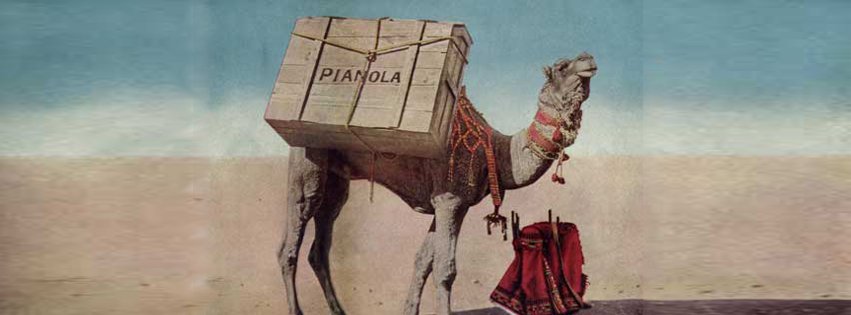
INTENSITY OF LIGHT
In this unique concert, pianist Gabriella Smart takes the audience on a spoken and musical journey inspired by the narratives of selected pianos from colonial Australia. She invited Australian composers Elena Kats Chernin, Luke Harrald, David Harris, Jon Rose and James Rushford to write works inspired by the narratives of selected colonial pianos in Australia. The pianos still exist in various locations, and their cultural and historical narratives have served to inspire new works that give a unique glimpse into Australia’s colonial history through the eyes of famous artists and Afghan cameleers, telling stories of genocide and the harshness of remote locations.
The result is a living history, revivifying the colonial piano as a significant cultural object: an estimated 700,000 pianos existed in Australia in 1888, with a population of 3,000,000. The program includes a work by Cat Hope that comments on the oppression of colonialism written for piano, ebows and AM radios, and a personal narrative through song on love and loss of homeland, written for piano and electronics by Constantine Koukias. The extraordinary creativity of these composers has resulted in a living history of Australia.
PROGRAM
Epirus 8’
An Ancient Voice (Piano Version 2018)
By Constantine Koukias (AUS/NL)
Pre-Recorded Tape Engineer – Evert de Cock
Picnic at Broken Hill 5.30′
For piano and pre-recorded electronics
By Jon Rose (AUS/UK)
Damp Antiquary 6’
For solo piano
By James Rushford (AUS)
Piano Memories 4’
For solo piano
By Elena Kats Chernin (AUS/RUSS)
Station Chains 7’
For solo piano
By David Harris (AUS)
The Fourth Estate 8’
For grand piano, two ebows and AM radios
By Cat Hope (AUS)
The Intensity of Light 7.30′
For piano and pre-recorded electronics
By Luke Harrald (AUS)
Previous performances
October 16 2018
Bratislava Music Academy Hall, “Music Today” Concert Series
July 15 2018
Beaumont House, Adelaide, Australia
June 29 2018
Tura, Perth, TURA New Music Concert Series
April 22 2018
MLIVE, Monash University, Melbourne, Australia
April 13 2018
Adelaide Central School of Art (World Premiere), Adelaide, Australia